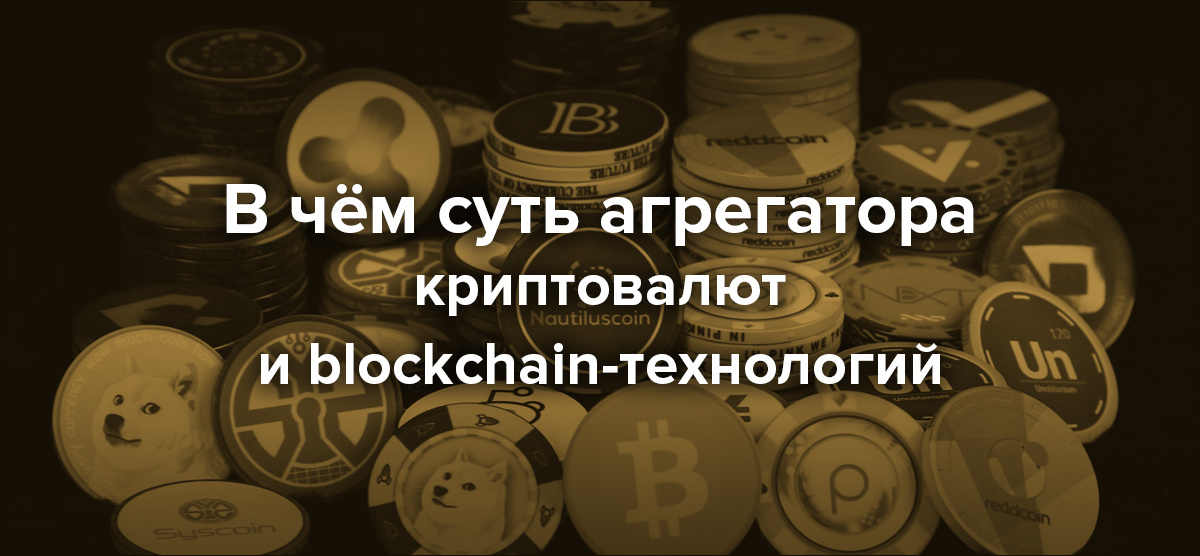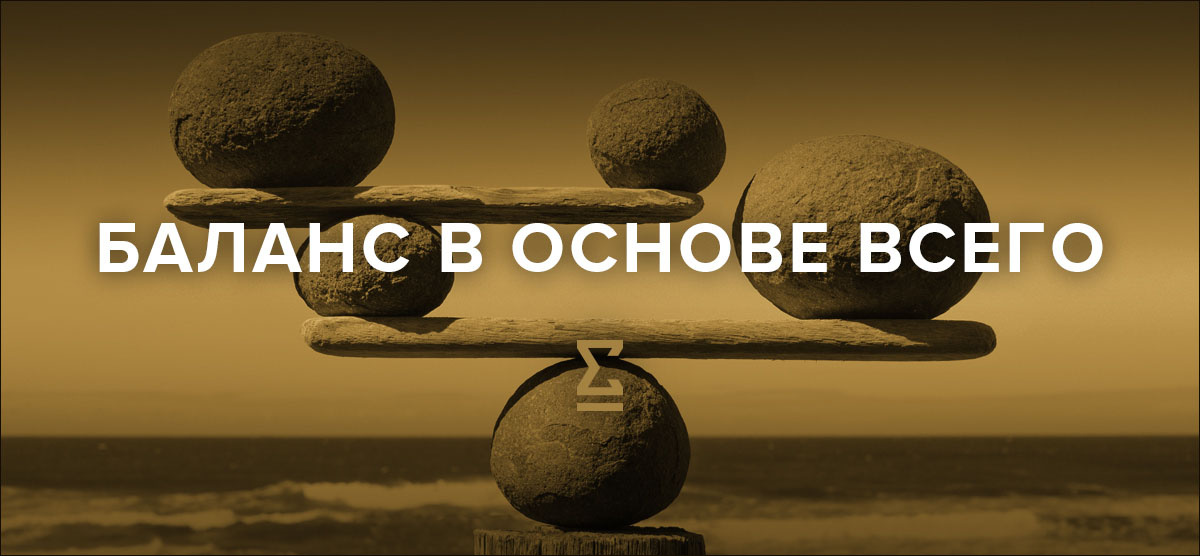XRONOS - aggregator
Hi GT! The XRONOS aggregator project is actually 2 years old: all this time we have been working on the products that make it up, and weren’t really bothered about the topic of name or positioning. Like all geeks, we were passionate about the idea, and did not see the forest behind the trees. The global goals (geographically romantic and beautiful) have never changed in XRONOS, but the methods and means of achieving them have evolved with frightening speed.

As a result, a financial monster has grown out of a simple “garage project” of cryptocurrencies with a stable exchange rate, capable of working simultaneously with two economic systems: the stagnant Jamaican and cryptocurrency future based on blockchain.
The XRONOS cryptocurrency aggregator consists of three large products. Those, in turn, have a multitude of individual tools and technologies that allow them to interact with the world of cryptocurrencies and the real sector of the economy: production and services.
Algorithms for the formation of a blockchain are one of the foundations of any cryptocurrency, and virtually every aspect of work depends on the concepts, rules and characteristics embedded in them: speed, security, scalability, and prospects.
We wanted to make something truly new and qualitatively different from the existing cryptocurrencies, so we did not take the ready-made solutions available on the network as a basis. XRONOS Blockchain is not a fork of a well-known crypt, it is written from scratch, each line of code was created taking into account the 10 fundamental principles that we approved before the work began. So it was easier to keep everything under control and understand that each next brick ideally fits into the foundation of the new system. All of them are essentially divided into three groups: ensuring the speed, security and / or anonymity of transfers and additional opportunities for the integration of cryptocurrency.

The speed of transaction processing directly depends on the time of formation of a new block in the chain and the speed of confirmation of this block by the network. The rate of formation of the block depends on the time to reach a consensus on each of the transactions. In order for a cryptocurrency to be fast, it is necessary to quickly check the validity of the operations and package them into ready-made blocks.
How we implemented it:
Transactions in XRONOS process and verify the so-called. "Master node". Now they are running only 6 units (the minimum necessary to reach a consensus), and load testing has shown that the network processes 96 transactions per second.
In general, transaction confirmations are similar to those in the Ripple network. The key difference lies in verifiers verifying the operations: in Ripple they are trusted nodes, and in XRONOS they are anonymous.
The IPv4.0 problem has not taught people anything. When creating Bitcoin, the authors simply did not take into account the growth of loads on the network over time. And many alt-koiny attacked the same rake. The slowing down of the network and the inability of the community to agree on protocol improvements have already split cryptocurrency into two or three forks, but the resulting fragments continue their way through "limited improvements" that will exhaust their resources in a few years.
How we implemented it:
The self-optimizing blockchain XRONOS is devoid of these shortcomings by definition: it will not turn into a cumbersome monster whose architecture will limit the development of cryptocurrency. Instead of the infinite growth of block size, we applied a safe and lightweight system of balancing blocks paired with a simple rule for creating the blocks themselves: one transaction - one block
For each purse, a “balance” is periodically adjusted and a special block is recorded in which all transactions are verified and confirmed. Further work is carried out in such a way that the calculations are carried out from the "trusted unit": the system does not have to recheck the entire data chain and do extra work.
This elegant solution drastically reduces the amount of information processed — with such an approach, you can simply forget about the problem of slowing down work due to accumulated information about transactions.
Less information - easier calculations - faster network operation. Even after 100 years, XRONOS master nodes will conduct transactions as quickly as they did when the project was launched.
The easier it is to launch additional transaction processing nodes, the easier it is to increase the computing power of the network. That is, to increase the speed of operations.
How we implemented it:
XRONOS master nodes run on almost any operating system. To create a new node does not require a complex installation, just enough to run a single file, if desired, it will work even on a smartphone. After a comprehensive audit of the code for security and reliability, we will give anyone the opportunity to create their master node: so the XRONOS blockchain will become truly decentralized, and its transaction processing rate will increase.
This principle is a logical continuation of the previous three. If you have a blockchain that does not slow down over time, it generates blocks with lightning speed, and new network nodes are triggered by a double click - nothing prevents you from increasing linearly the speed and reliability of the network. According to preliminary estimates, only 150 nodes running on the most common computers will ensure that the daily transaction volume is comparable to that of VISA or MasterCard. About 500 knots is enough to ensure all the movement of capital on the planet. Not bad?

All cryptocurrencies in one degree or another try to protect themselves from fraudsters, but only XRONOS is safe by design. No, we have not made the system invulnerable - there are no invulnerable systems, especially with full decentralization. Just any attack on the blockchain XRONOS will never be a financially attractive task, and here's why.
Safety at the heart of everything:
In popular cryptocurrencies today one, maximum two or three blockchain protection factors against unauthorized changes are used. We have several such degrees of protection at once, and each covers the weak points of the rest. Classic PoW and PoS, ZKP, CryptoNote plus 8 hashing algorithms, random transaction checking nodes and some other technologies work together. For any successful attack, it is necessary to capture not 51, but more than 80% of the computing power of the network. All security measures will be released soon separate material.
The ability to put the tokens out of the brackets of the system without compromising security is a convenient tool for both smart contracts and the integration of digital currency into offline tools. The implementation of this principle in XRONOS has become possible for a number of reasons.
How is this even possible?
For example, our blockchain works with all transactions, as with two independent operations: spending money on one wallet and crediting it to another. Between these two moments, the incomplete payment is stored in a distributed registry at a one-time address. On the basis of this concept, a system of “demand demand transactions” or “bonds” works.
Knowing the parameters of access to such a transaction, you can “transfer” it to your account. And the “keys” to the bond, like the bond itself, can be transferred by any convenient means of communication. Apply to scratch cards, print to a printer and mail, or even embed in smart contracts third-party blockchains such as Ethereum or Waves. Each bond is credited once and in its entirety, and the system has a built-in system for checking the reality of the account and the amount lying on it - so you can always check the basic terms of the transaction before making it.
Bonds allow you to “break” the direct connection between the recipient and the sender: coins in unfinished transactions are stored at one-time addresses, and access codes to the bond can be sent via any secure and anonymous channel of communication. Simple and reliable.
The ability to write a digital object to a blockchain makes it unique and non-durable. Here you and digital distribution, and use in computer games, and everything that just comes to mind. There would be an opportunity.
How it works in the XRONOS aggregator:
We already have a system of pending transactions (bonds). If you change the transfer of "coins" to "essence" - nothing will change, it can also be saved in the blockchain. The item will be unique, and transferring it from hand to hand will be 100% protected from duplicates or fakes. That is, any digital product can be made “verifiable” and “reliable”: from a game item or license key to a smart contract in another blockchain.

Smart Contracts is one of the cornerstones of the p2p economy. Together with complex arbitration systems, they are included in the basic idea of the XRONOS blockchain. For the operation of this system, we are developing a special language SHRL (smart human relationship language), which can in very simple forms describe the event-based logic of effective inter-user relationships and link cryptocurrency operations to them. Simple and effective ..
The ability to work with the API, laid out "out of the box" - what could be better? So XRONOS can be connected to anything, even to the site, even to the cash register or to any other application. At the same time, transaction costs will only decrease, since all transactions will become transparent, reliable, and do not require complex banking infrastructure.
Blockchain XRONOS has incorporated all the latest developments and is designed with a real future: as IPv6. By that time, when the properties embedded in XRONOS begin to expire, the economy will have time to reorganize ten times and switch to cryptocurrency rails.
Under current conditions, a “classic” cryptocurrency cannot be stable by definition: its emission practically does not interact with the current financial system, and the price is formed solely from user confidence, convenience, and various unique features offered by a particular coin. Binding a token to the dollar, the euro, or any other yuan does not make the coin stable. This is a temporary crutch that can fall off at any time.
To ensure a stable exchange rate, two things are required: a benchmark to which a currency should strive, and a tool that can adjust its value (try to bring the value closer to the benchmark). At the same time, the system should not be invulnerable for speculative attacks or provide any other loopholes for “rocking the boat”. A huge unsecured money supply will easily overturn a currency with guaranteed security, if you do not limit the possibilities of pressure on it.

There are not so many financial instruments for regulating the exchange rate: inflation (an increase in the money supply with some depreciation of them), deflation (a decrease in the money supply with an increase in their value), and a guarantee of solvency. All three tools are implemented in XRONOS in the form of software algorithms (bots) - analytical, emission and guaranteeing.
For the standard of cost, 1 GAW is selected - an hour of working time on the planet. It is calculated from data provided by OECD member countries (Organization for Economic Cooperation and Development). For unification, all calculations are carried out in dollars, and the transfer of some currencies to others is made not at speculative rates, but at purchasing power parity. GAW is recalculated once a year.
As an expression of the value of the standard, the IMF virtual payment instrument was taken - the so-called. “Special drawing rights”. They reflect the situation in the five largest economies of the world and the ratio of currencies circulating in free trade of these economies: that is, they act as the balance sheet of this financial system.

To adjust the value of the coin applied by the bots-controlled emission and demission of the currency. The bot analyst calculates the necessary value of the coins and gives commands to two other bots. Emission bot - sells new coins for another cryptocurrency, which is stored in the system. Guarantee - buying users extra money and paying for them with the existing crypt at the current rate. All this time, the cryptoactive assets received during the emission are not a dead weight, but work for the benefit of the system, forming the so-called "Cryptocurrency basket".
Another tool to control the exchange rate XRONOS. Funds received during the issue of coins as their collateral value are stored in a cryptocurrency basket. The composition of the basket is determined by a bot analyst based on a number of factors. It includes coins whose total capitalization in the market is> 90%: this way we protect users' funds against high-risk assets. The shares of currencies in the basket are determined by their contribution to the capitalization of the crypto market and the movement of stock exchange rates. By default, the bot seeks to invest and redistribute funds in the most profitable way - to exit from falling positions, to replenish the growing portfolio.
Thus, for every XRONOS coin, there is not an abstract “fixed value”, but a whole range of financial instruments.
On behalf of the real economy, GAW acts, expressed through SDR. The standard is neutral, and its price is expressed not in one currency, but in “money” consisting of the contribution of the five largest economies of the planet. They will not collapse at once.
From the side of cryptocurrency, and does play> 90% of market capitalization: even sharp drawdowns (like the recent fall in Bitcoin) do not hurt XPO as much as they could.

We created a test version of the wallet for Android and browsers for one purpose - to test the functionality of XRONOS. It turned out that it turned out unexpectedly simple and easy interface to work with the "crypt". Today, our designers are conjuring over him: from a purely "tech-nary" solution, a number of slim clients for the Web, iOS and Android will soon grow. Open API will allow to connect new functions to the wallet. Over time, it will become overgrown with satellite services and will be even more similar to the applications of modern mobile banks: it will include not only direct transfers of cryptocurrency, but also mechanisms for paying for goods and services.
In the near future, the main source code will be posted on GitHub - anyone can build their own fork or offer improvements to the functional part of the wallet.
Each of you can say "we have seen this feature", "but this has already been implemented in such and such a project." Good ideas for improving cryptocurrency come to mind not only to us, and this is normal. We are happy with every successful project that has implemented one or another concept conceived by us - this means that we are on the right track, and everything will work as it should in XRONOS.

When the best practices of the industry are combined in a single product, as a rule, something qualitatively different appears. New opportunities are opening up, there are prospects for further growth not only for the aggregator, but also for the entire market. Obviously, the blockchain economy has a future.
PS: One of the fundamental principles of the XRONOS - openness and transparency. You have questions on the functioning of the network, on any financial instruments underlying it - ask them in the comments. We will try to take them into account in the construction of the next publication or to answer them personally.

As a result, a financial monster has grown out of a simple “garage project” of cryptocurrencies with a stable exchange rate, capable of working simultaneously with two economic systems: the stagnant Jamaican and cryptocurrency future based on blockchain.
How it works?
The XRONOS cryptocurrency aggregator consists of three large products. Those, in turn, have a multitude of individual tools and technologies that allow them to interact with the world of cryptocurrencies and the real sector of the economy: production and services.
BLOCKCHAIN
Algorithms for the formation of a blockchain are one of the foundations of any cryptocurrency, and virtually every aspect of work depends on the concepts, rules and characteristics embedded in them: speed, security, scalability, and prospects.
We wanted to make something truly new and qualitatively different from the existing cryptocurrencies, so we did not take the ready-made solutions available on the network as a basis. XRONOS Blockchain is not a fork of a well-known crypt, it is written from scratch, each line of code was created taking into account the 10 fundamental principles that we approved before the work began. So it was easier to keep everything under control and understand that each next brick ideally fits into the foundation of the new system. All of them are essentially divided into three groups: ensuring the speed, security and / or anonymity of transfers and additional opportunities for the integration of cryptocurrency.

Principle # 1: Fast Transactions
The speed of transaction processing directly depends on the time of formation of a new block in the chain and the speed of confirmation of this block by the network. The rate of formation of the block depends on the time to reach a consensus on each of the transactions. In order for a cryptocurrency to be fast, it is necessary to quickly check the validity of the operations and package them into ready-made blocks.
How we implemented it:
Transactions in XRONOS process and verify the so-called. "Master node". Now they are running only 6 units (the minimum necessary to reach a consensus), and load testing has shown that the network processes 96 transactions per second.
In general, transaction confirmations are similar to those in the Ripple network. The key difference lies in verifiers verifying the operations: in Ripple they are trusted nodes, and in XRONOS they are anonymous.
Principle # 2: Blockchain self-optimization and system growth readiness
The IPv4.0 problem has not taught people anything. When creating Bitcoin, the authors simply did not take into account the growth of loads on the network over time. And many alt-koiny attacked the same rake. The slowing down of the network and the inability of the community to agree on protocol improvements have already split cryptocurrency into two or three forks, but the resulting fragments continue their way through "limited improvements" that will exhaust their resources in a few years.
How we implemented it:
The self-optimizing blockchain XRONOS is devoid of these shortcomings by definition: it will not turn into a cumbersome monster whose architecture will limit the development of cryptocurrency. Instead of the infinite growth of block size, we applied a safe and lightweight system of balancing blocks paired with a simple rule for creating the blocks themselves: one transaction - one block
For each purse, a “balance” is periodically adjusted and a special block is recorded in which all transactions are verified and confirmed. Further work is carried out in such a way that the calculations are carried out from the "trusted unit": the system does not have to recheck the entire data chain and do extra work.
This elegant solution drastically reduces the amount of information processed — with such an approach, you can simply forget about the problem of slowing down work due to accumulated information about transactions.
Less information - easier calculations - faster network operation. Even after 100 years, XRONOS master nodes will conduct transactions as quickly as they did when the project was launched.
Principle # 3: Ease of launching new nodes on the network.
The easier it is to launch additional transaction processing nodes, the easier it is to increase the computing power of the network. That is, to increase the speed of operations.
How we implemented it:
XRONOS master nodes run on almost any operating system. To create a new node does not require a complex installation, just enough to run a single file, if desired, it will work even on a smartphone. After a comprehensive audit of the code for security and reliability, we will give anyone the opportunity to create their master node: so the XRONOS blockchain will become truly decentralized, and its transaction processing rate will increase.
Principle # 4: Linear Scalability
This principle is a logical continuation of the previous three. If you have a blockchain that does not slow down over time, it generates blocks with lightning speed, and new network nodes are triggered by a double click - nothing prevents you from increasing linearly the speed and reliability of the network. According to preliminary estimates, only 150 nodes running on the most common computers will ensure that the daily transaction volume is comparable to that of VISA or MasterCard. About 500 knots is enough to ensure all the movement of capital on the planet. Not bad?

Principle # 5: Top-Level Security
All cryptocurrencies in one degree or another try to protect themselves from fraudsters, but only XRONOS is safe by design. No, we have not made the system invulnerable - there are no invulnerable systems, especially with full decentralization. Just any attack on the blockchain XRONOS will never be a financially attractive task, and here's why.
Safety at the heart of everything:
In popular cryptocurrencies today one, maximum two or three blockchain protection factors against unauthorized changes are used. We have several such degrees of protection at once, and each covers the weak points of the rest. Classic PoW and PoS, ZKP, CryptoNote plus 8 hashing algorithms, random transaction checking nodes and some other technologies work together. For any successful attack, it is necessary to capture not 51, but more than 80% of the computing power of the network. All security measures will be released soon separate material.
Principle # 6: the possibility of off-line transactions
The ability to put the tokens out of the brackets of the system without compromising security is a convenient tool for both smart contracts and the integration of digital currency into offline tools. The implementation of this principle in XRONOS has become possible for a number of reasons.
How is this even possible?
For example, our blockchain works with all transactions, as with two independent operations: spending money on one wallet and crediting it to another. Between these two moments, the incomplete payment is stored in a distributed registry at a one-time address. On the basis of this concept, a system of “demand demand transactions” or “bonds” works.
Knowing the parameters of access to such a transaction, you can “transfer” it to your account. And the “keys” to the bond, like the bond itself, can be transferred by any convenient means of communication. Apply to scratch cards, print to a printer and mail, or even embed in smart contracts third-party blockchains such as Ethereum or Waves. Each bond is credited once and in its entirety, and the system has a built-in system for checking the reality of the account and the amount lying on it - so you can always check the basic terms of the transaction before making it.
Principle # 7: Secure Anonymity
Bonds allow you to “break” the direct connection between the recipient and the sender: coins in unfinished transactions are stored at one-time addresses, and access codes to the bond can be sent via any secure and anonymous channel of communication. Simple and reliable.
Principle # 8: Tokenization of Virtual Items
The ability to write a digital object to a blockchain makes it unique and non-durable. Here you and digital distribution, and use in computer games, and everything that just comes to mind. There would be an opportunity.
How it works in the XRONOS aggregator:
We already have a system of pending transactions (bonds). If you change the transfer of "coins" to "essence" - nothing will change, it can also be saved in the blockchain. The item will be unique, and transferring it from hand to hand will be 100% protected from duplicates or fakes. That is, any digital product can be made “verifiable” and “reliable”: from a game item or license key to a smart contract in another blockchain.

Principle # 9: support smart contracts and tools for collective responsibility
Smart Contracts is one of the cornerstones of the p2p economy. Together with complex arbitration systems, they are included in the basic idea of the XRONOS blockchain. For the operation of this system, we are developing a special language SHRL (smart human relationship language), which can in very simple forms describe the event-based logic of effective inter-user relationships and link cryptocurrency operations to them. Simple and effective ..
Principle # 10: openness to integration
The ability to work with the API, laid out "out of the box" - what could be better? So XRONOS can be connected to anything, even to the site, even to the cash register or to any other application. At the same time, transaction costs will only decrease, since all transactions will become transparent, reliable, and do not require complex banking infrastructure.
It is thought over to trifles
Blockchain XRONOS has incorporated all the latest developments and is designed with a real future: as IPv6. By that time, when the properties embedded in XRONOS begin to expire, the economy will have time to reorganize ten times and switch to cryptocurrency rails.
XRSS - Xronos Realtime Stabilization System
Under current conditions, a “classic” cryptocurrency cannot be stable by definition: its emission practically does not interact with the current financial system, and the price is formed solely from user confidence, convenience, and various unique features offered by a particular coin. Binding a token to the dollar, the euro, or any other yuan does not make the coin stable. This is a temporary crutch that can fall off at any time.
To ensure a stable exchange rate, two things are required: a benchmark to which a currency should strive, and a tool that can adjust its value (try to bring the value closer to the benchmark). At the same time, the system should not be invulnerable for speculative attacks or provide any other loopholes for “rocking the boat”. A huge unsecured money supply will easily overturn a currency with guaranteed security, if you do not limit the possibilities of pressure on it.

There are not so many financial instruments for regulating the exchange rate: inflation (an increase in the money supply with some depreciation of them), deflation (a decrease in the money supply with an increase in their value), and a guarantee of solvency. All three tools are implemented in XRONOS in the form of software algorithms (bots) - analytical, emission and guaranteeing.
Reference
For the standard of cost, 1 GAW is selected - an hour of working time on the planet. It is calculated from data provided by OECD member countries (Organization for Economic Cooperation and Development). For unification, all calculations are carried out in dollars, and the transfer of some currencies to others is made not at speculative rates, but at purchasing power parity. GAW is recalculated once a year.
As an expression of the value of the standard, the IMF virtual payment instrument was taken - the so-called. “Special drawing rights”. They reflect the situation in the five largest economies of the world and the ratio of currencies circulating in free trade of these economies: that is, they act as the balance sheet of this financial system.

Currency rate management
To adjust the value of the coin applied by the bots-controlled emission and demission of the currency. The bot analyst calculates the necessary value of the coins and gives commands to two other bots. Emission bot - sells new coins for another cryptocurrency, which is stored in the system. Guarantee - buying users extra money and paying for them with the existing crypt at the current rate. All this time, the cryptoactive assets received during the emission are not a dead weight, but work for the benefit of the system, forming the so-called "Cryptocurrency basket".
Cryptocurrency basket and liquidity provision
Another tool to control the exchange rate XRONOS. Funds received during the issue of coins as their collateral value are stored in a cryptocurrency basket. The composition of the basket is determined by a bot analyst based on a number of factors. It includes coins whose total capitalization in the market is> 90%: this way we protect users' funds against high-risk assets. The shares of currencies in the basket are determined by their contribution to the capitalization of the crypto market and the movement of stock exchange rates. By default, the bot seeks to invest and redistribute funds in the most profitable way - to exit from falling positions, to replenish the growing portfolio.
What is the result:
Thus, for every XRONOS coin, there is not an abstract “fixed value”, but a whole range of financial instruments.
On behalf of the real economy, GAW acts, expressed through SDR. The standard is neutral, and its price is expressed not in one currency, but in “money” consisting of the contribution of the five largest economies of the planet. They will not collapse at once.
From the side of cryptocurrency, and does play> 90% of market capitalization: even sharp drawdowns (like the recent fall in Bitcoin) do not hurt XPO as much as they could.

Wallet
We created a test version of the wallet for Android and browsers for one purpose - to test the functionality of XRONOS. It turned out that it turned out unexpectedly simple and easy interface to work with the "crypt". Today, our designers are conjuring over him: from a purely "tech-nary" solution, a number of slim clients for the Web, iOS and Android will soon grow. Open API will allow to connect new functions to the wallet. Over time, it will become overgrown with satellite services and will be even more similar to the applications of modern mobile banks: it will include not only direct transfers of cryptocurrency, but also mechanisms for paying for goods and services.
In the near future, the main source code will be posted on GitHub - anyone can build their own fork or offer improvements to the functional part of the wallet.
XRONOS - aggregator of cryptocurrency and blockchain technologies
Each of you can say "we have seen this feature", "but this has already been implemented in such and such a project." Good ideas for improving cryptocurrency come to mind not only to us, and this is normal. We are happy with every successful project that has implemented one or another concept conceived by us - this means that we are on the right track, and everything will work as it should in XRONOS.

When the best practices of the industry are combined in a single product, as a rule, something qualitatively different appears. New opportunities are opening up, there are prospects for further growth not only for the aggregator, but also for the entire market. Obviously, the blockchain economy has a future.
PS: One of the fundamental principles of the XRONOS - openness and transparency. You have questions on the functioning of the network, on any financial instruments underlying it - ask them in the comments. We will try to take them into account in the construction of the next publication or to answer them personally.
All Articles